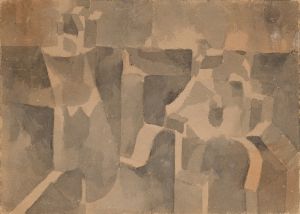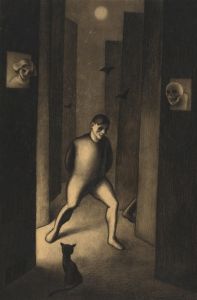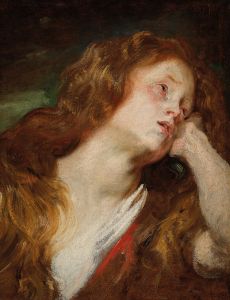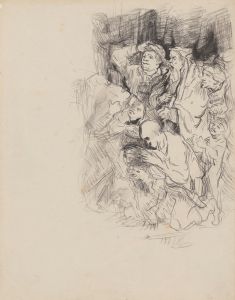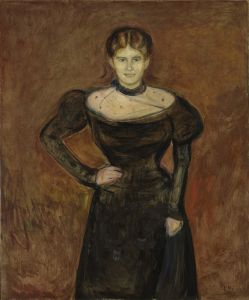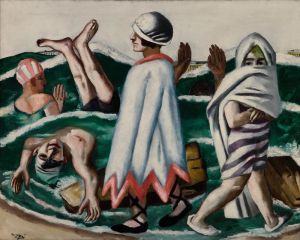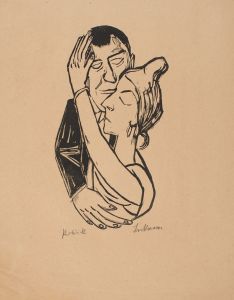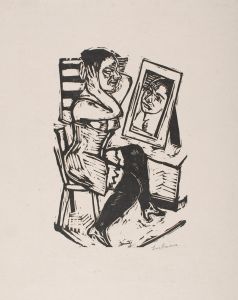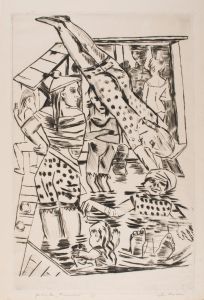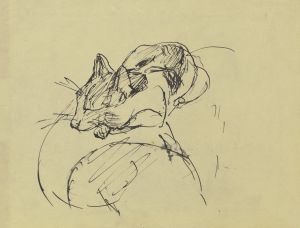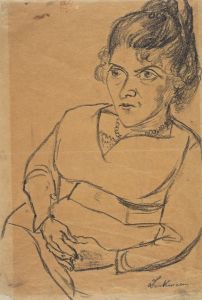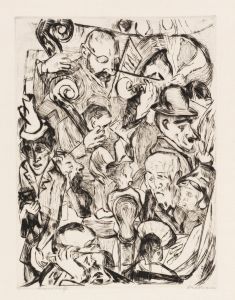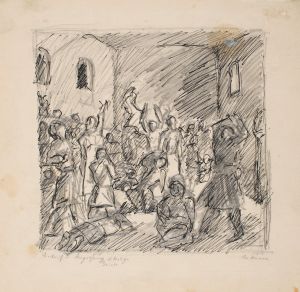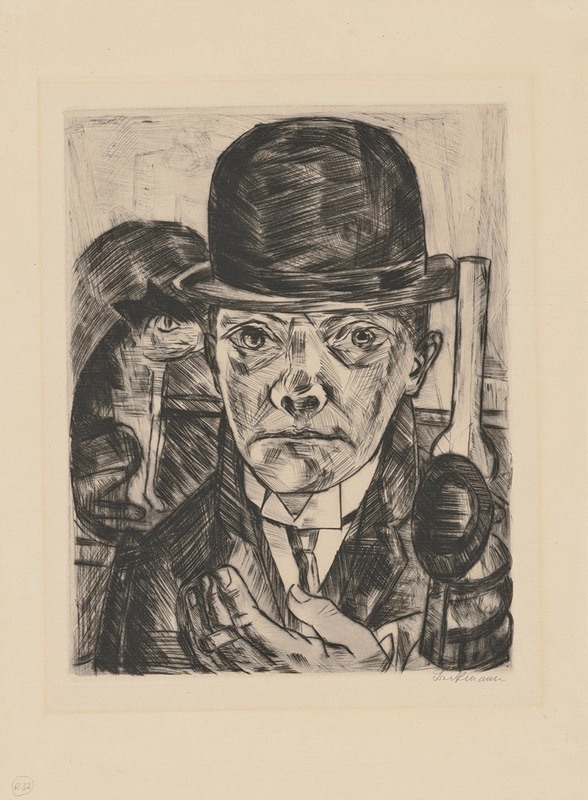
elbstbildnis mit steifem Hut
A hand-painted replica of Max Beckmann’s masterpiece elbstbildnis mit steifem Hut, meticulously crafted by professional artists to capture the true essence of the original. Each piece is created with museum-quality canvas and rare mineral pigments, carefully painted by experienced artists with delicate brushstrokes and rich, layered colors to perfectly recreate the texture of the original artwork. Unlike machine-printed reproductions, this hand-painted version brings the painting to life, infused with the artist’s emotions and skill in every stroke. Whether for personal collection or home decoration, it instantly elevates the artistic atmosphere of any space.
Max Beckmann's "Self-Portrait with a Stiff Hat" (German: "Selbstbildnis mit steifem Hut") is a notable work by the German painter, created in 1921. Beckmann, a prominent figure in the New Objectivity movement, is renowned for his expressive and often introspective self-portraits, which provide insight into his complex personality and the turbulent times in which he lived.
This painting is one of several self-portraits Beckmann produced throughout his career, reflecting his evolving style and the changing socio-political landscape of early 20th-century Europe. "Self-Portrait with a Stiff Hat" is characterized by its bold lines, strong contrasts, and a somewhat somber palette, typical of Beckmann's work during this period. The painting depicts Beckmann wearing a formal suit and a stiff-brimmed hat, gazing directly at the viewer with an intense and contemplative expression. This direct gaze is a common feature in Beckmann's self-portraits, inviting viewers to engage with the artist's inner world.
The painting's composition is marked by a sense of immediacy and presence, achieved through Beckmann's use of a close-up, frontal pose. The background is relatively plain, ensuring that the focus remains on the artist's face and attire. The choice of clothing and the hat suggest a certain formality and perhaps a commentary on the societal roles and expectations of the time. Beckmann's use of color and shadow adds depth to the image, enhancing the emotional impact of the work.
Beckmann's self-portraits are often seen as a reflection of his personal experiences and the broader historical context. Having served as a medical orderly during World War I, Beckmann was deeply affected by the horrors of war, which influenced his artistic vision. The post-war period in Germany was marked by political instability and economic hardship, themes that are subtly echoed in the somber tone of "Self-Portrait with a Stiff Hat."
Throughout his career, Beckmann sought to capture the complexities of human existence, and his self-portraits are a testament to this endeavor. They reveal not only his personal struggles and triumphs but also his engagement with the world around him. "Self-Portrait with a Stiff Hat" stands as a significant example of Beckmann's ability to convey profound psychological depth through portraiture.
Max Beckmann's influence extends beyond his own time, as he remains a key figure in the study of modern art. His works are celebrated for their technical skill, emotional intensity, and the unique perspective they offer on the human condition. "Self-Portrait with a Stiff Hat" is housed in a collection that continues to attract art enthusiasts and scholars, who are drawn to Beckmann's distinctive style and the compelling narratives embedded in his art.





